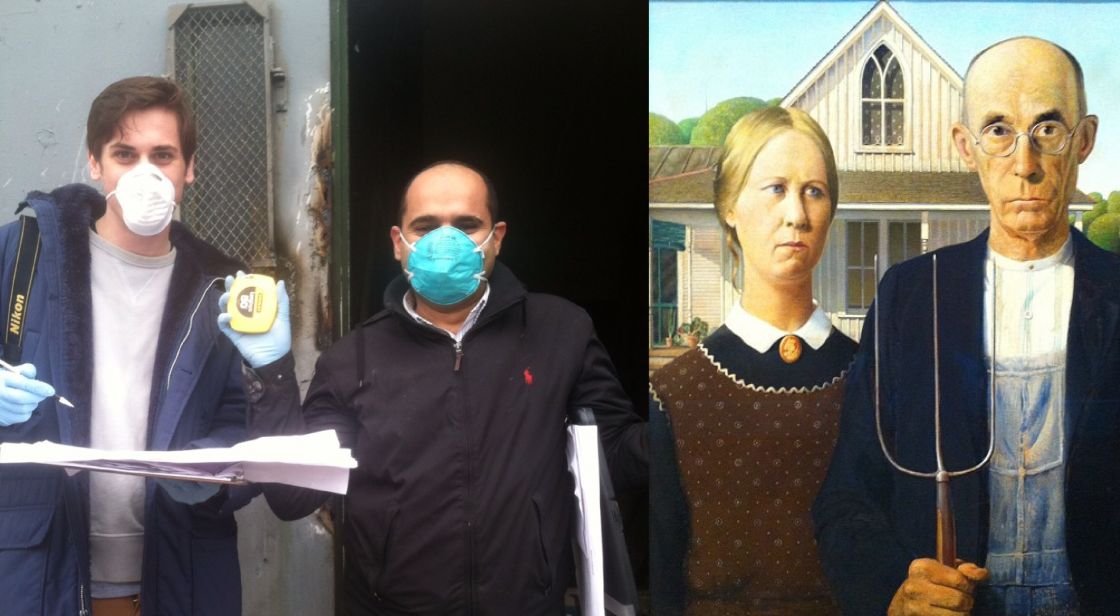Grant Wood’s portrait of a farmer and his daughter standing in front of a Carpenter Gothic is an American classic. It is revered not only because of its accurate portrayal of a distinct period in time but also because it accomplishes what I believe any great work of art strives to be: a well articulated creation that lends itself to a number of interpretations; one that offers few explanations but instead proposes endless amounts of questions.
In reality Wood had a simple desire to paint the house together with the people he imagined might live there. What strikes me most about the painting is that Wood made a conscious decision to place the people in the foreground rather than the object which sparked his initial creative inquiry.
I let out an excited laugh when I received an email the other day whose subject line read “What are you guys doing in this picture?” The email included a picture of Mounir Tawadrous and myself (shown to the left). On a basic level, the picture does indeed bear a structured resemblance to Wood’s 1930 painting. Instead of a farmer and his daughter, we have the project architect and the intern by his side. All classic tools of the trade are present: pens, tape measures, clip boards, drawings, cameras and ventilation masks. Despite the context clues, the picture tells very little about what Mounir and I were actually doing that day.
For starters, we were standing in front of that deteriorating door as part of a day-long site survey of the Rudolph Walton Elementary School situated in the Strawberry Mansion neighborhood of North Philadelphia. Stepping through the door felt like crossing a gateway into some sort of post-apocalyptic alternate reality instead of the environment for learning it once served. The strangest thing about my experience that day was that as the survey wore on, I couldn’t help but feel a growing attachment to the building. Instead of the confined wasteland I initially mistook it for, the humble structure now felt much more like a sanctuary from the neighborhood that awaited us outside.
It later struck me that this is exactly why we are rehabilitating this historic structure. We are trying provide a tattered community with a safe haven from the uncertainty beyond the school walls. We are seeking to create a new identity for the future of this neighborhood: a more accurate connection between people and place. This school building serves as a beacon of potential. Although our primary focus as architects is to design, we cannot lose sight of the figures standing in the foreground. However unlike Grant Wood, we must not only be able to imagine to type of people who will live there, but also the type of people they will become as a result.

